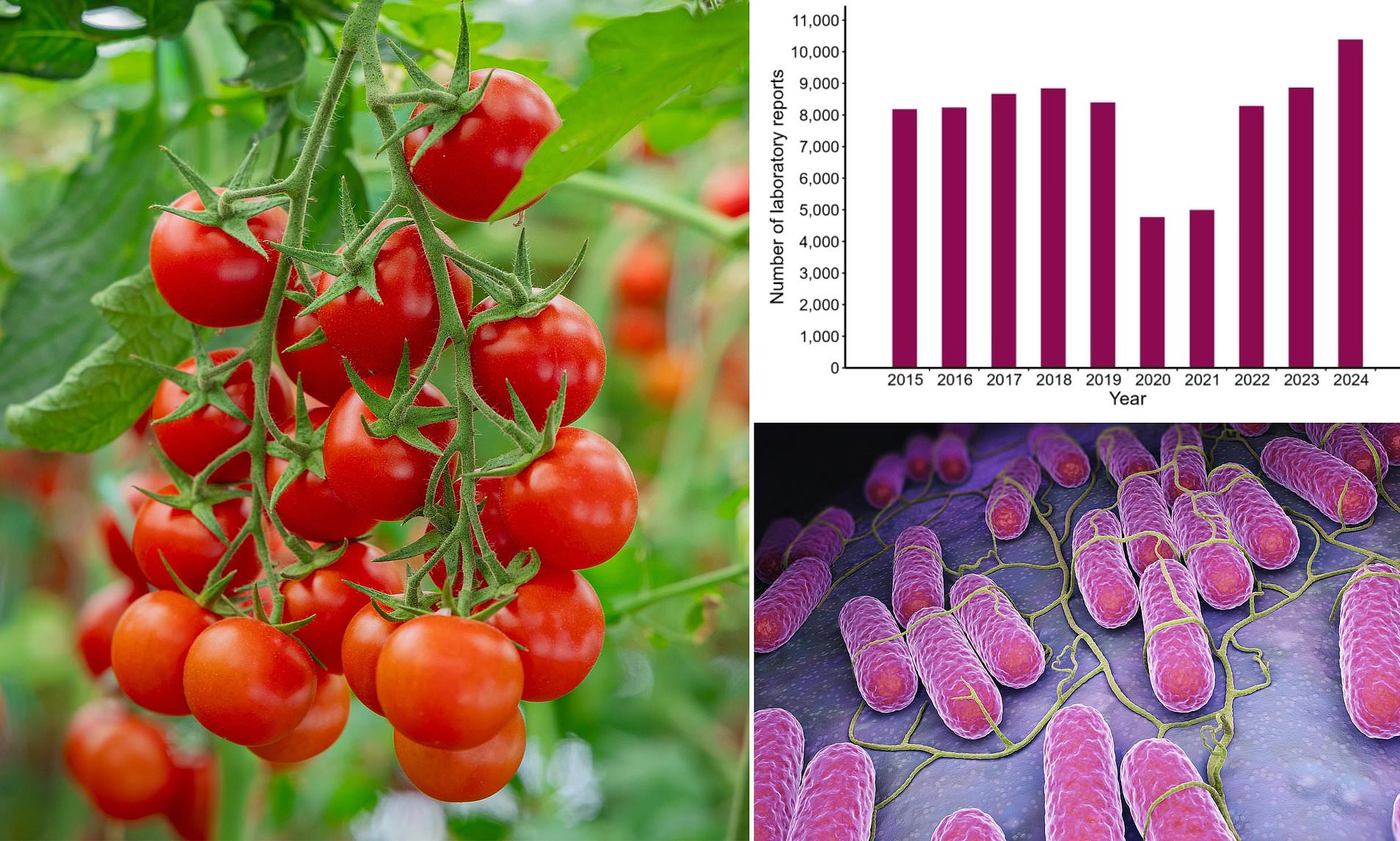Surge in Salmonella Cases Linked to Tomatoes and Red Meat
Health authorities in the UK have raised concerns over a significant increase in salmonella infections, particularly those linked to tomatoes. The latest reports indicate that more than 100 individuals have been affected by two rare strains of the bacteria—Salmonella Blockley (S. Blockley) and Salmonella Strathcona. At least 14 people required hospitalisation due to the severity of their symptoms.
The outbreak has not been limited to a specific region within the UK, with cases reported across the country. According to the UK Health Security Agency (UKHSA), all confirmed cases were caused by these two uncommon strains. S. Blockley is typically more prevalent in East Asia and the United States, and it has only been recorded in European countries on a few occasions. This makes the current situation even more alarming for health officials.
Rise in Salmonella Cases in 2025
Recent data from the UKHSA shows that salmonella cases have continued to rise in the first quarter of 2025. A total of 1,588 cases were recorded between January and March 2025, surpassing the 1,541 cases reported during the same period in 2024. In comparison, there were 1,328 cases logged in the first three months of 2023. This upward trend highlights the growing public health concern surrounding foodborne illnesses.
Salmonella is a group of bacteria commonly found in the gut of farm animals and can contaminate various food products such as meat, eggs, and poultry. While most people recover within a few days, the infection can be life-threatening, especially for vulnerable populations like children, the elderly, and individuals with weakened immune systems.
How Salmonella Spreads
The incubation period for salmonella ranges from 12 to 72 hours after consuming contaminated food. Symptoms often include fever, diarrhoea, and vomiting. Severe cases may lead to dehydration, requiring hospitalisation.
In the 2024 outbreaks, S. Blockley was linked to 81 confirmed cases, all associated with tomatoes. Of these, at least 14 individuals were hospitalised. Similarly, a separate outbreak involving Salmonella Strathcona affected 24 people, although the origin of the tomatoes remains unclear. It is uncertain whether they were grown domestically or imported from other countries.
Research suggests that the texture of tomatoes makes them more susceptible to contamination. Since they are often consumed raw, rather than cooked, any bacteria present is not eliminated through heat. Contaminated water used in farming or soil can also contribute to the spread of salmonella.
Additional Outbreaks and Public Health Response
Another salmonella outbreak involving 109 cases was traced back to red meat. The UKHSA’s 2024 data revealed that salmonella cases reached a record high, increasing by nearly 20% in one year to over 10,000 cases. Children under 10 years old were disproportionately affected, accounting for 21.5% of all cases.
Dr. James Cooper, deputy director of food policy at the Food Standards Agency (FSA), stated that efforts are underway to understand the reasons behind the rise in salmonella cases and other pathogens. He added that this analysis will help implement necessary measures to safeguard public health.
The FSA is also collaborating with industry stakeholders and local authorities to ensure that businesses comply with food safety regulations. These combined efforts aim to reduce the risk of future outbreaks and protect consumers from foodborne illnesses.






